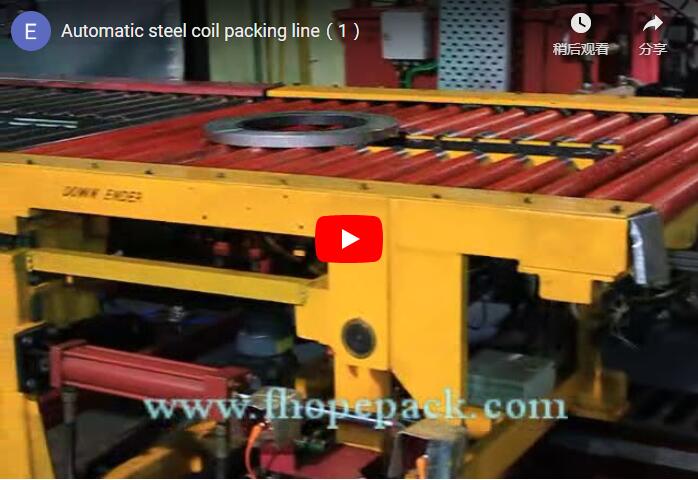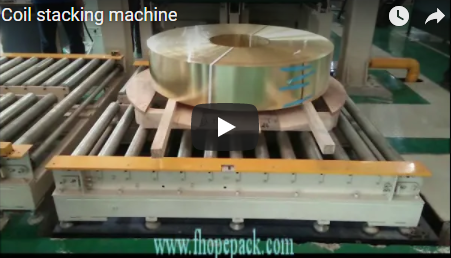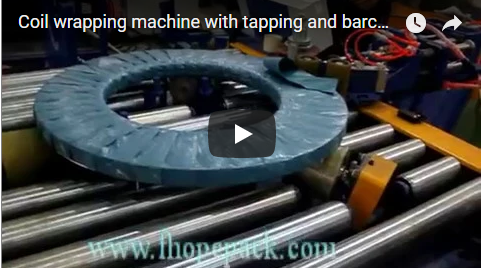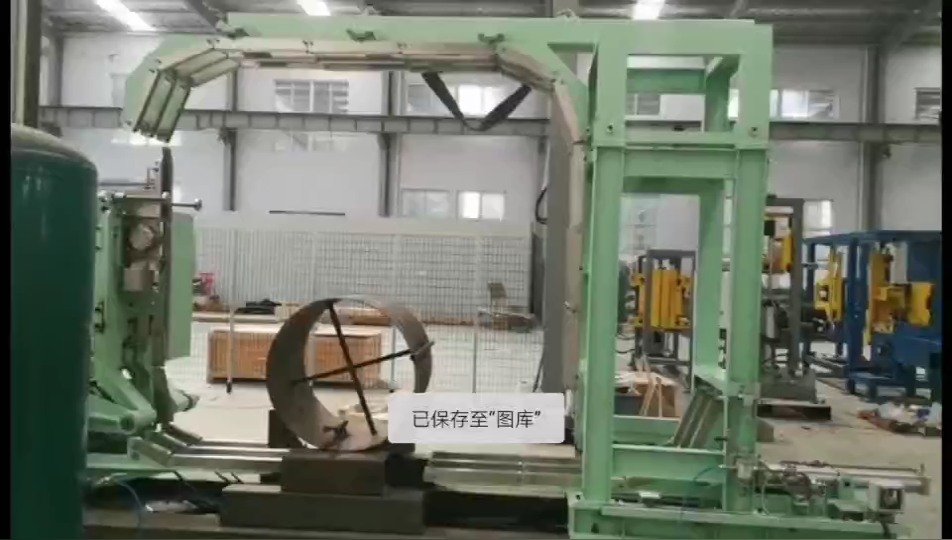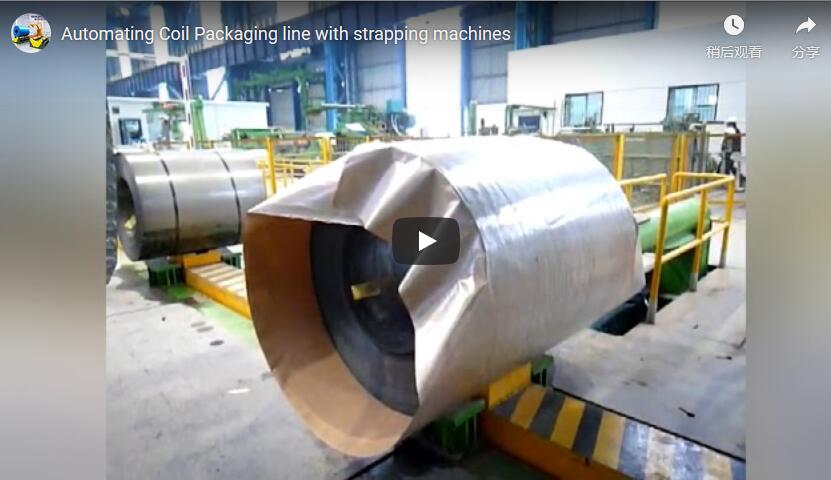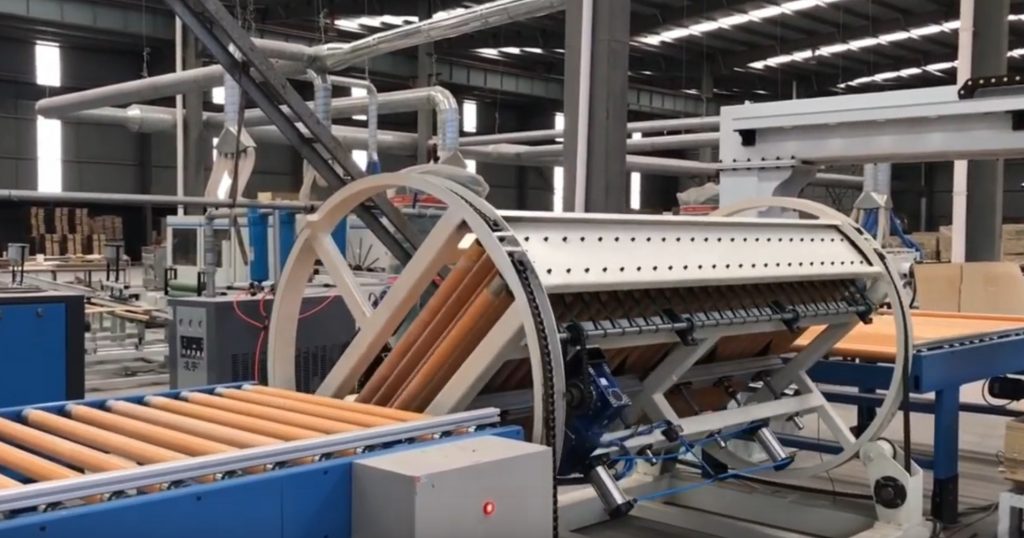Optimizing Coil Packaging: A Technical Look at Integrated Tilter, Wrapper, and Stacker Systems
Handling and packaging large, heavy coils, such as those made of steel, aluminum, or other metals, presents significant logistical and safety challenges in numerous industries. An integrated coil packing line incorporating tilting, wrapping, and stacking functions offers an automated solution designed to enhance efficiency, improve package integrity, and reduce manual handling risks. This article delves into the technical aspects, operational workflow, and practical considerations of these sophisticated systems.
1. Understanding the Core Components and Functionality
An integrated coil packing line typically consists of several key modules working in unison:
1.1 The Coil Tilter (Upender/Downender)
The process often begins with orienting the coil correctly for packaging. A coil tilter (or upender/downender) securely grips the coil and rotates it, typically by 90 degrees, to transition it from an "eye-to-sky" (vertical bore) to an "eye-to-horizon" (horizontal bore) position, or vice-versa. This reorientation is crucial for feeding the coil onto the wrapping station's conveyor system. Hydraulic or electromechanical drives power this mechanism, prioritizing smooth, controlled movement to prevent coil damage.
1.2 The Orbital Wrapping Station
Once positioned horizontally, the coil moves to the wrapping station. The most common technology employed here is orbital wrapping. The coil rests on driven support rollers that rotate it around its central axis. Simultaneously, a wrapping shuttle carrying a roll of packaging material (such as stretch film, VCI paper, or other protective layers) orbits through the eye of the coil and around its outer circumference.
- Material Dispensing: Precise control over material tension and overlap is critical for a secure, protective wrap. Systems often feature pre-stretch units for film economy and adjustable overlap settings.
- Wrapping Cycle: The number of wraps and layering patterns can be programmed based on coil dimensions and protection requirements.
1.3 The Stacking Unit
After wrapping, the protected coil is transferred to the stacking station. This module carefully receives the wrapped coils and stacks them vertically to a predetermined height or count. Mechanisms might include lifting platforms, robotic arms, or pusher systems, ensuring stable and aligned stacks ready for storage or shipment. Safety sensors and interlocks are essential to prevent collisions or unstable stacks.
2. Typical Operational Workflow
The automated sequence generally follows these steps:
- Coil Loading: The coil is placed onto the infeed conveyor or directly onto the tilter, often via crane or forklift.
- Tilting: The tilter rotates the coil to the horizontal wrapping orientation (eye-to-horizon).
- Conveying: The coil moves along powered roller conveyors to the wrapping station. Sensors detect its arrival and position.
- Wrapping: The orbital wrapping process commences based on pre-set parameters (material type, tension, overlap, number of layers). The coil rotates as the shuttle dispenses and applies the wrapping material.
- Material Cut & Seal: Upon cycle completion, the wrapping material is automatically cut and secured (e.g., heat seal, wipe-down).
- Ejection & Transfer: The wrapped coil is conveyed out of the wrapping station towards the stacker.
- Stacking: The stacking mechanism receives the coil and places it onto the existing stack or initiates a new one.
- Stack Discharge: Once the desired stack height is reached, the completed stack is discharged onto an exit conveyor or holding area for removal.
3. Key Technical Specifications to Consider
When evaluating or specifying such a system, engineers should focus on parameters like:
- Coil Dimensions:
- Inner Diameter (ID) Range
- Outer Diameter (OD) Range
- Coil Width Range
- Maximum Coil Weight Capacity
- Wrapping Parameters:
- Compatible Wrapping Materials (Stretch film, VCI, paper, HDPE)
- Material Roll Specifications (Width, OD, core diameter)
- Adjustable Wrapping Overlap Percentage
- Maximum Wrapping Speed / Cycle Time (Coils per hour)
- Stacking Parameters:
- Maximum Stacking Height or Coil Count
- Stack Weight Capacity
- System Control:
- Control System Type (PLC Brand/Model)
- Human-Machine Interface (HMI) Size and Features
- Level of Automation and Integration Capabilities (e.g., MES/ERP communication)
- Utilities:
- Power Requirements (Voltage, Phase, Frequency)
- Compressed Air Consumption (Pressure, Volume)
- Physical Footprint:
- Overall Machine Dimensions (Length x Width x Height)
4. Advantages of Integrated Coil Packing Systems
Beyond the basic function, integrated lines offer significant operational benefits:
- Increased Throughput and Efficiency: Automation dramatically reduces manual handling time, enabling higher processing speeds and consistent cycle times compared to manual or semi-automatic methods.
- Enhanced Personnel Safety: Minimizing direct human interaction with heavy coils significantly reduces the risk of crushing, pinching, or straining injuries associated with manual tilting, wrapping, and stacking.
- Consistent Package Quality: Automated wrapping ensures uniform tension, overlap, and material application, leading to better protection against environmental factors (moisture, dust) and handling damage. Precise stacking prevents leaning or unstable loads.
- Reduced Labor Costs: Automation decreases the need for manual labor dedicated to the packaging process, allowing personnel reallocation to higher-value tasks.
- Optimized Material Usage: Features like film pre-stretch units can significantly reduce consumable material consumption compared to manual wrapping.
- Space Efficiency: Combining multiple functions (tilting, wrapping, stacking) into one integrated line can minimize the overall floor space required compared to separate standalone machines.

coil packing line 5. Practical Considerations and Experience Sharing
Implementing and operating these systems involves several practical aspects:
- Upstream/Downstream Integration: Seamless integration with existing material handling systems (cranes, AGVs, conveyors) is crucial for maximizing efficiency. Buffer zones may be needed to accommodate variations in line speeds.
- Maintenance: Regular preventative maintenance is essential, focusing on wear parts like rollers, belts, cutting blades, and sensors. Lubrication schedules should be strictly followed. Understanding common fault codes via the HMI aids troubleshooting.
- Operator Training: Personnel need proper training on system operation, safety procedures, loading/unloading techniques, HMI navigation, and basic troubleshooting.
- Flexibility and Customization: Systems can often be customized to handle specific coil types, sizes, weights, and packaging material requirements. Discussing future needs during the specification phase is advisable.
- Installation and Commissioning: Proper foundation, alignment, and utility connections are critical. Thorough commissioning ensures all functions operate correctly and safely before handover.
6. Applications Across Industries
Integrated coil packing lines are vital in various sectors, including:
- Steel and Aluminum Service Centers
- Non-ferrous Metal Processing (Copper, Brass)
- Wire and Cable Manufacturing
- Tube and Pipe Mills
- Automotive Stamping Operations
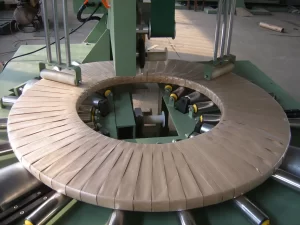
copper coil wrapper2 Conclusion
Automated coil packing lines integrating tilting, wrapping, and stacking functions represent a significant advancement in industrial packaging technology. By addressing safety concerns, improving package quality, and boosting operational efficiency, these systems provide a robust solution for manufacturers and processors handling large volumes of coiled materials. Careful consideration of technical specifications, workflow integration, and ongoing maintenance ensures these machines deliver maximum value and reliability throughout their operational life.
https://www.fhopepack.com/Coil_packing_machine.html
For further information on packaging standards and technologies, resources like PMMI - The Association for Packaging and Processing Technologies can be valuable.

